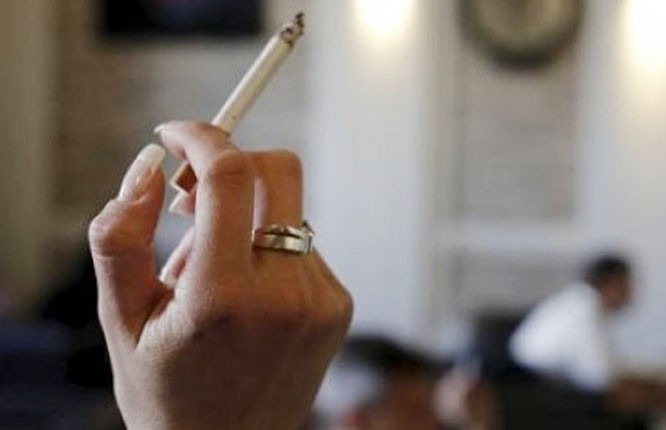
Should we be choosing smoking as a symbol of defiance for women?

There is a certain amount of satisfaction involved in symbolic defiance and rebellion against the norm, specifically in structured societies where the only way to beat the suffocation of certain individuals’ mind is to break away from set social patterns and to subvert them.
Recently, in the wake of the rejuvenated discourse regarding women’s emancipation in Pakistan, I have tried to critically analyse every move which we, as women and feminists, make to carve a better future for ourselves. One of the things which I have noticed and endeavoured to probe is the idea of emancipation through the use of symbols.
Smoking has been used as a symbol of defiance against prevalent cultural patterns by both feminists and progressive women. I must confess that I myself offended many a person, including my family members, when I declined to accept their arguments against smoking by assigning the activity the label of one’s personal choice and a method to break social taboos.
There is little doubt in the fact that this social taboo explicitly denies Pakistani women their right to publicly or socially enjoy tobacco while men can be spotted making a blunt show of their indulgence. However, in the raging desire to break a social taboo, one may ultimately be supporting the tobacco industry and presenting women with a camouflaged quasi-ideal to strengthen the cause of women’s emancipation and liberty.
Amanda Amosa and Margaretha Haglund, affiliated with International Network of Women Against Tobacco, published their essay, "From social taboo to torch of freedom: the marketing of cigarettes to women" (2000), which might bear some interesting insight in it for us. The essay traces the transformation of the practice of smoking by women from a social taboo to the point of it being used as the "torch of freedom" in various societies.
The reception of women smoking cigarettes doubtlessly claims a symbolic resistance against the suppression of patriarchal and capitalistic setups, however, the propaganda flourished by the capital-producing-tobacco-industry conveniently remains unquestioned. The essay also delves into the historical evolution of the use of female figures for the promotion of tobacco products.
In Pakistan we haven’t yet reached that stage where cigarette manufacturers could advertise their products portraying women as consumers but they certainly have started recruiting women ambassadors.
Loosely an 86 billion rupee contribution was made in 2015 by the tobacco industry in Pakistan. However, the statistics of tobacco users report only 5.7 percent women ‘consumers’ which indicates the social stigma still attached to the smoking of women in Pakistan. Hence, while it gives this cancer-stick a symbol of defiance and a claim to liberty by women like myself who want to work against any kind of discrimination in any field, form or way of life, it also engenders a need to reflect upon hidden agendas.
There should be an attempt to deconstruct this symbol of liberty. There must be a considerable amount of reflection regarding the fact that we have mistakenly chosen the wrong symbols of resistance to struggle against a never-ending socio-political and economic repression.
The writer is a poet and independent researcher.